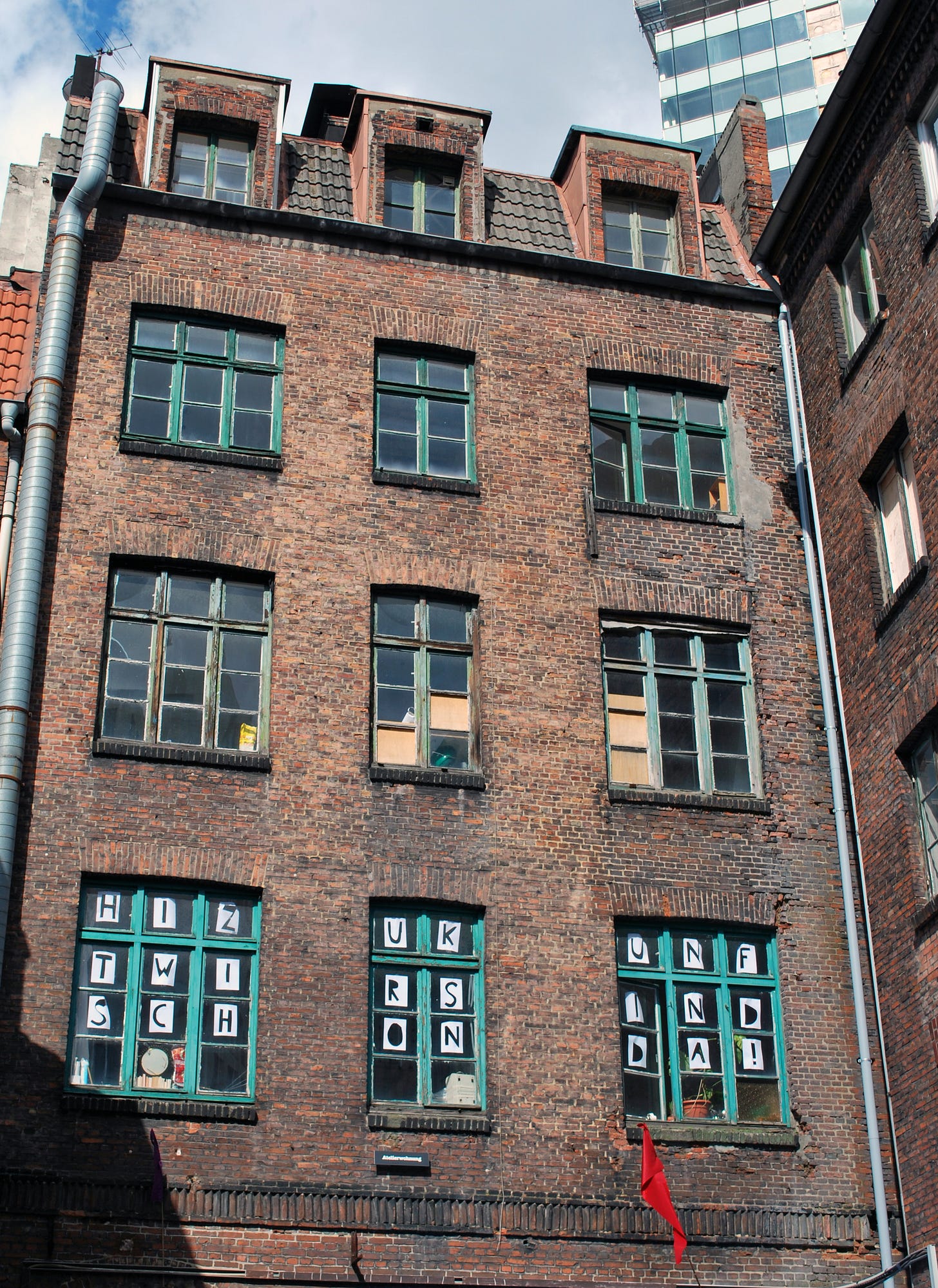
"These parallel stories reveal something profound about cities: they are shaped as much by what we lose as by what we save." - Nat Kalbach
I remember the smell when I first wandered through narrow passages between century-old buildings in Hamburg, Germany's city center in 2009: Brick dust, old wood, and the unmistakable scent of spray paint. This was the place where 200 artists had just taken over a complex of 12 historic buildings, bought by a Dutch investor and slated for demolition.
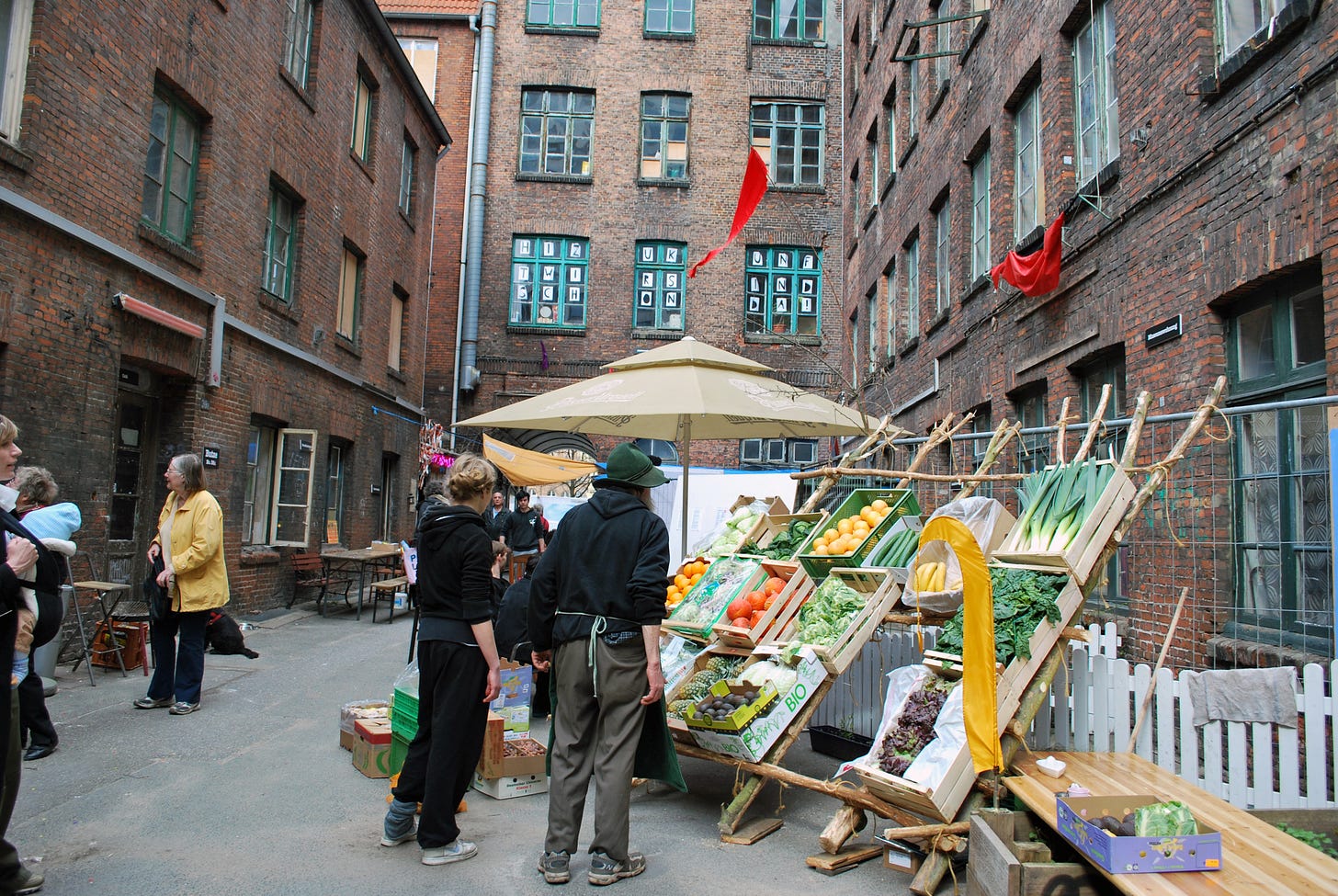
Graffiti characters with oversized eyes stared from crumbling walls, handmade signs hung from windows telling us “Hi future, we are already here”. Exhibitions and performances in the alleyway, and in the studios. Music weaving in and out. A makeshift produce stand in the courtyard inviting us to get vegetables. Creativity just oozing out of the brick seams.
This was The Gängeviertel, a historic quarter that refused to die. It is still there in 2025 - the city of Hamburg bought the buildings back and the artist cooperative continues to thrive as a recognized cultural center.
When I moved to Jersey City about four years later, I would hear whispers of a similar story, but with a dramatically different ending: 111 1st St. Tris McCall's voice echoes his feelings of reverence and loss in our podcast conversation: "The mothership, on the front door, it said 'the heart of the arts.' And it was no lie." A creative ecosystem of painters, sculptors, photographers, musicians and performers, feeding each other's imagination.
The energy must have been contagious. I know, because it was in The Gängeviertel - in fact that was the place that inspired my paintings, using spray paints, combining different and found materials, just experiment joyfully.
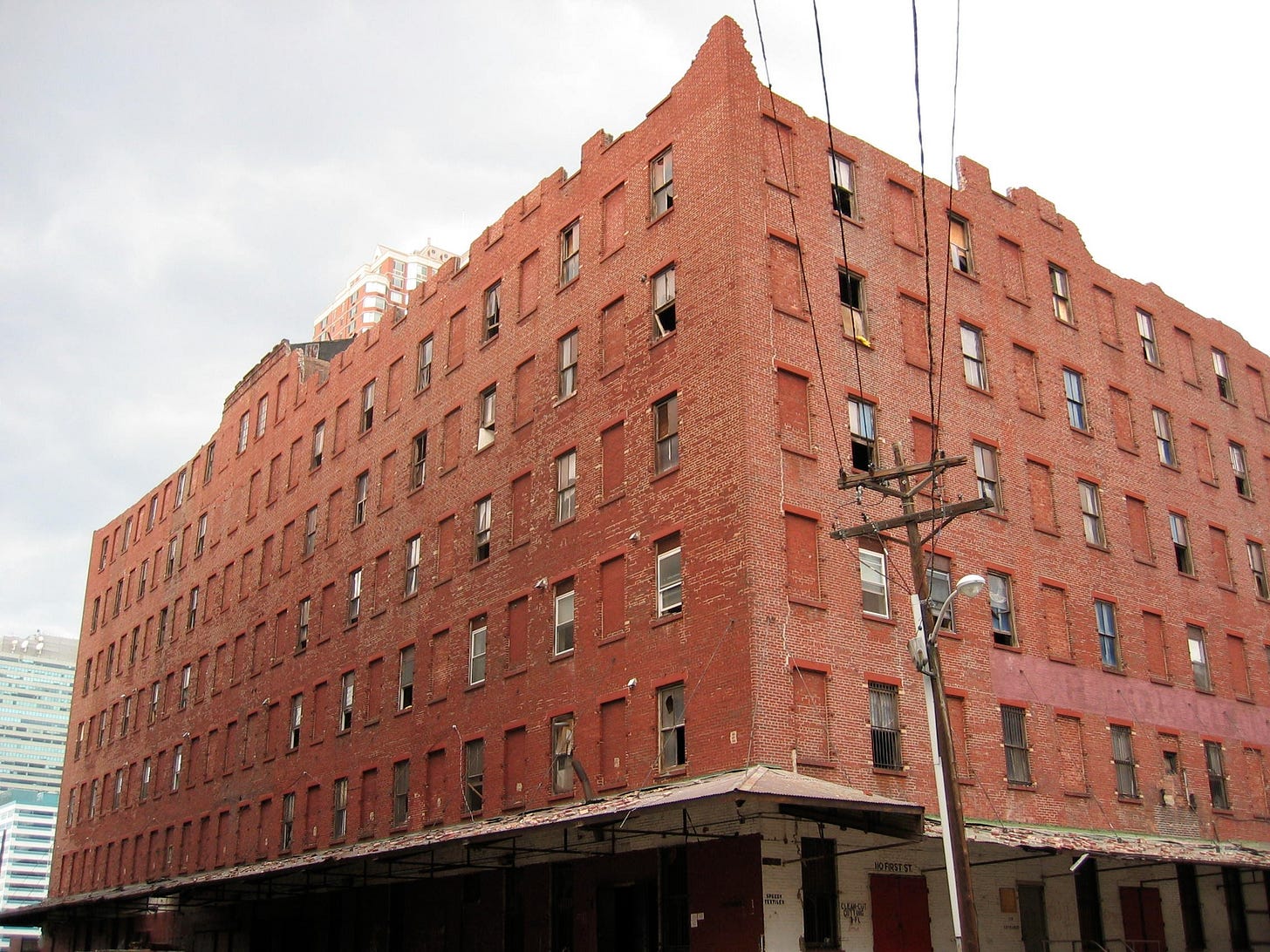
I'd arrived too late to experience the converted warehouse in Jersey City that once housed 200 artists until its demolition in 2007. 200 artists - like a magic number - again the parallels are uncanny. Standing at the site where the building once stood, you can only see the ghost of what had been - and what might have been - a pile of bricks. A different future that never materialized.
Hamburg, Germany is the second biggest city in Germany... not Munich, not Frankfurt, as many people outside the country think. Just like Jersey City, it is a very expensive city, rents are sky high, and places that are affordable for artists are rare.
Two cities, two historic places, two artist communities of almost identical size, two preservation fights, but only one success story.
What was different? I can't say for sure because I wasn't here for the battle for 111 1st Street. Complex forces shape these outcomes - political climate, economic timing, leadership decisions, and sometimes just luck. What I do know is that both communities fought hard for spaces they loved.
"Komm in die Gänge" meaning "get moving" or "come to the Gänge" - a wordplay on the name of the area in Hamburg "Gängeviertel" - became an invitation and battle cry. The 200 artists in Hamburg were strategic in their approach, though you wouldn't necessarily see that looking at the creative, seemingly chaotic environment they created. In Jersey City, the "Mothership" also opened its doors wide, inviting the public to experience its vibrant community. Both transformed rooms into galleries and opened them to everyone who was curious enough to come. Both hosted performances, documented their work, and tried to show their value to the broader community.1
The circumstances and outcomes diverged, but the passion behind both efforts came from the same place - a deep understanding of how vital these creative communities are to a city's soul.2
Standing on the empty lot where 111 1st Street once stood, it's easy to feel only loss. The tower that was supposed to replace it never materialized. Instead, there's just... absence.
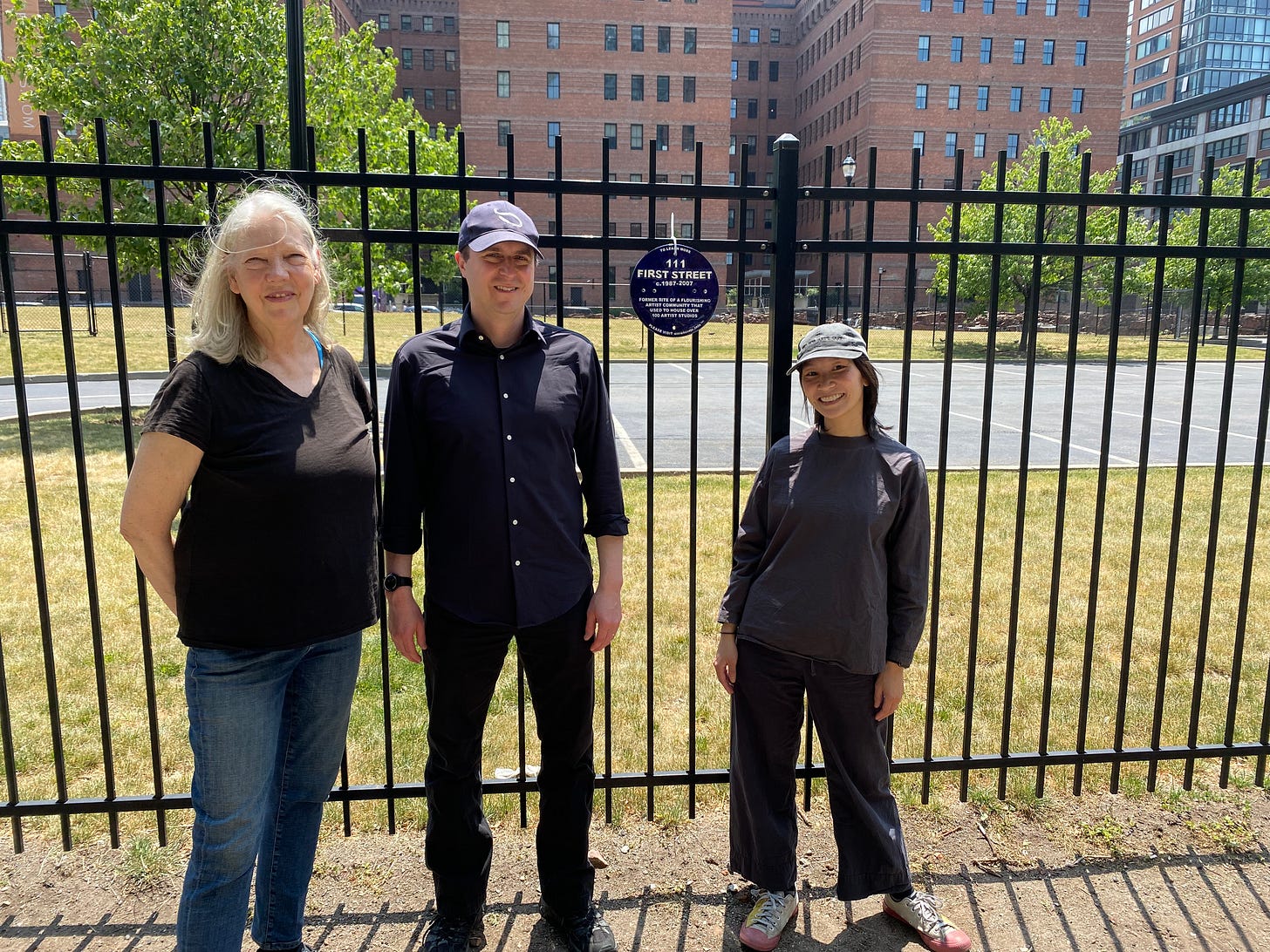
Yet Tris insists we haven't lost everything: "The patterns of creation would be very different here if it hadn't existed. I see its imprint, its shadow straight across the art scene."
"Even when preservation efforts don't succeed in saving a building, they can succeed in bringing people together and creating lasting connections," Kelly observed during our conversation about community-based preservation. This wisdom seems particularly poignant when applied to 111 1st Street. Though the building is gone, its influence lives on in spaces like Deep Space Gallery, which Tris described as having an "extremely 111 style feel."
Jin Jung's WERE HERE project offers another perspective on how we preserve what matters. Her handmade ceramic markers throughout Jersey City commemorate overlooked histories, creating what she calls "shelters for stories that might otherwise fade away."
"I thought people would care more when there was someone's hand on it," Jin explained about her choice of medium. "Like you could see that someone made it, that people wouldn't just ignore it or trash it right away."
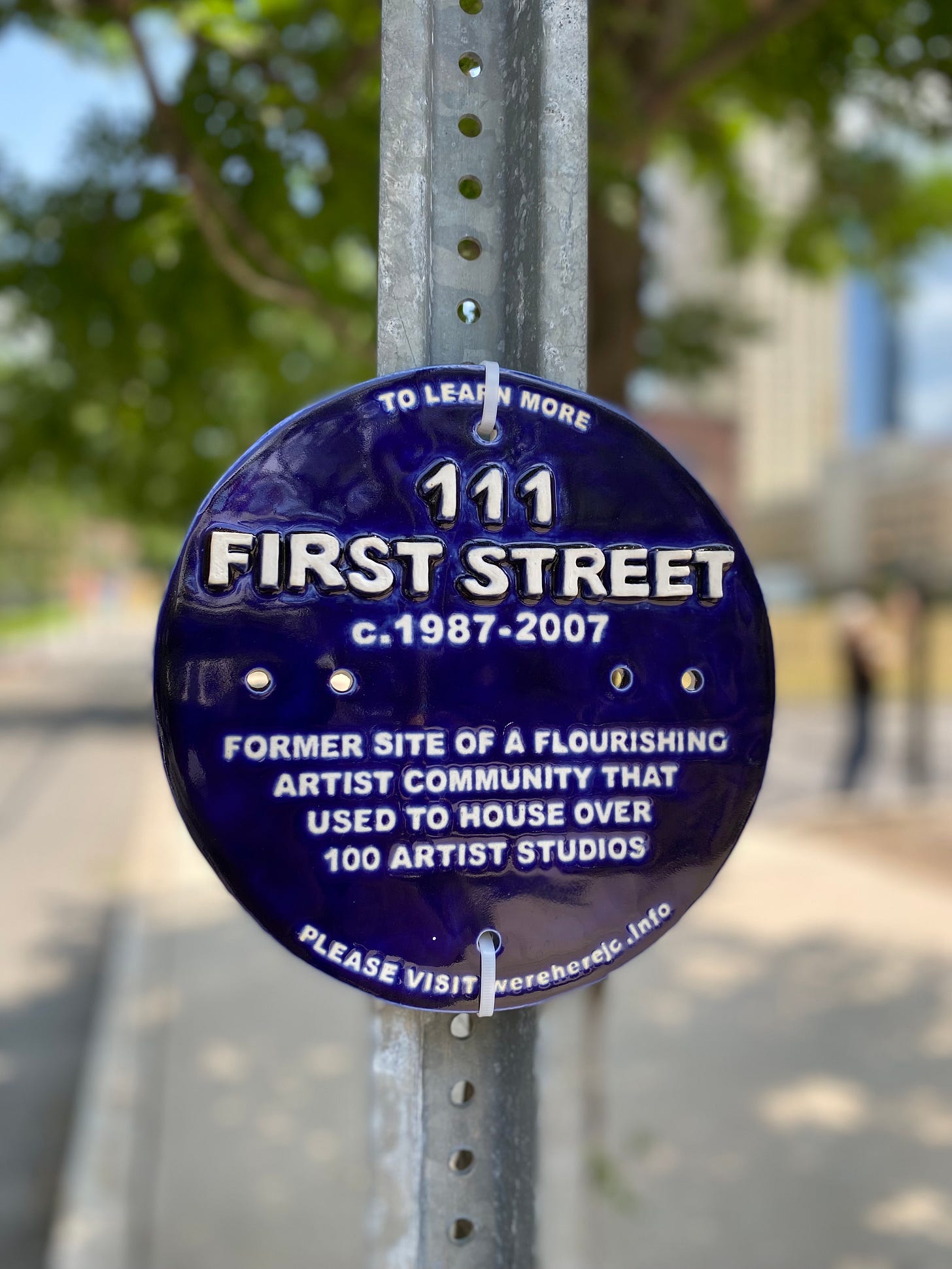
These parallel stories reveal something profound about cities: they are shaped as much by what we lose as by what we save. The ghost of 111 1st Street haunts Jersey City's art scene, pushing artists and advocates to fight harder for the spaces that remain. The success of The Gängeviertel reminds us that seemingly impossible preservation victories can happen with the right combination of strategy, timing, and community support.
As Jin Jung said about finding her place in Jersey City: "By choosing to live here, you're saying you want to be here, you want to be this, you want to be part of the fabric. So I know now that because I chose this, I have the responsibility to learn."
Perhaps that's the lesson these two parallel stories offer us – that preserving our cities' soul is everyone's responsibility. "Getting the communities in the towers, people who live in the towers, better integrated into Jersey City and into the civic life here is going to be a challenge because they're kind of living vertically. They're not living horizontally," Tris noted in our podcast conversation. This distinction between vertical and horizontal living captures something essential about these spaces. Historic buildings like 111 1st Street and The Gängeviertel fostered horizontal connections – people moving through spaces that encouraged interaction, community, and chance encounters. The new development model often prioritizes vertical isolation – efficient elevators whisking residents from private apartments to private cars with minimal engagement in between.
Is there hope for Jersey City to do better in the future, to really create community and help people be more than part of a bedroom community? I believe there is, but it requires action from all sides. The city government must do its share -help artists with affordable spaces, provide venues, spread the word about creative initiatives, and ensure housing affordability for everyone. The Jersey City Art and Studio Tour, now in its 36th year, continues to invite people to discover their neighborhoods and the creative spaces within them. This tradition - which Tris mentioned was initially inspired by the 111 1st Street community - encourages exactly the kind of horizontal exploration and connection that builds community.
The Arts and Culture Trust Fund that Jersey City residents voted to approve shows a growing recognition of what creative spaces mean to our community, but implementation matters too. Just as importantly, people moving to Jersey City need to understand they aren't coming to "emerging" neighborhoods - they're entering established communities with rich histories and existing social fabrics. They owe it to themselves and their neighbors to approach with the curiosity it takes to become part of that fabric rather than remaining in vertical isolation. New galleries continue to open. Artists continue to document, preserve, and reimagine our shared spaces. But sustaining this creative ecosystem requires commitment from city leadership, longtime residents, and newcomers alike.
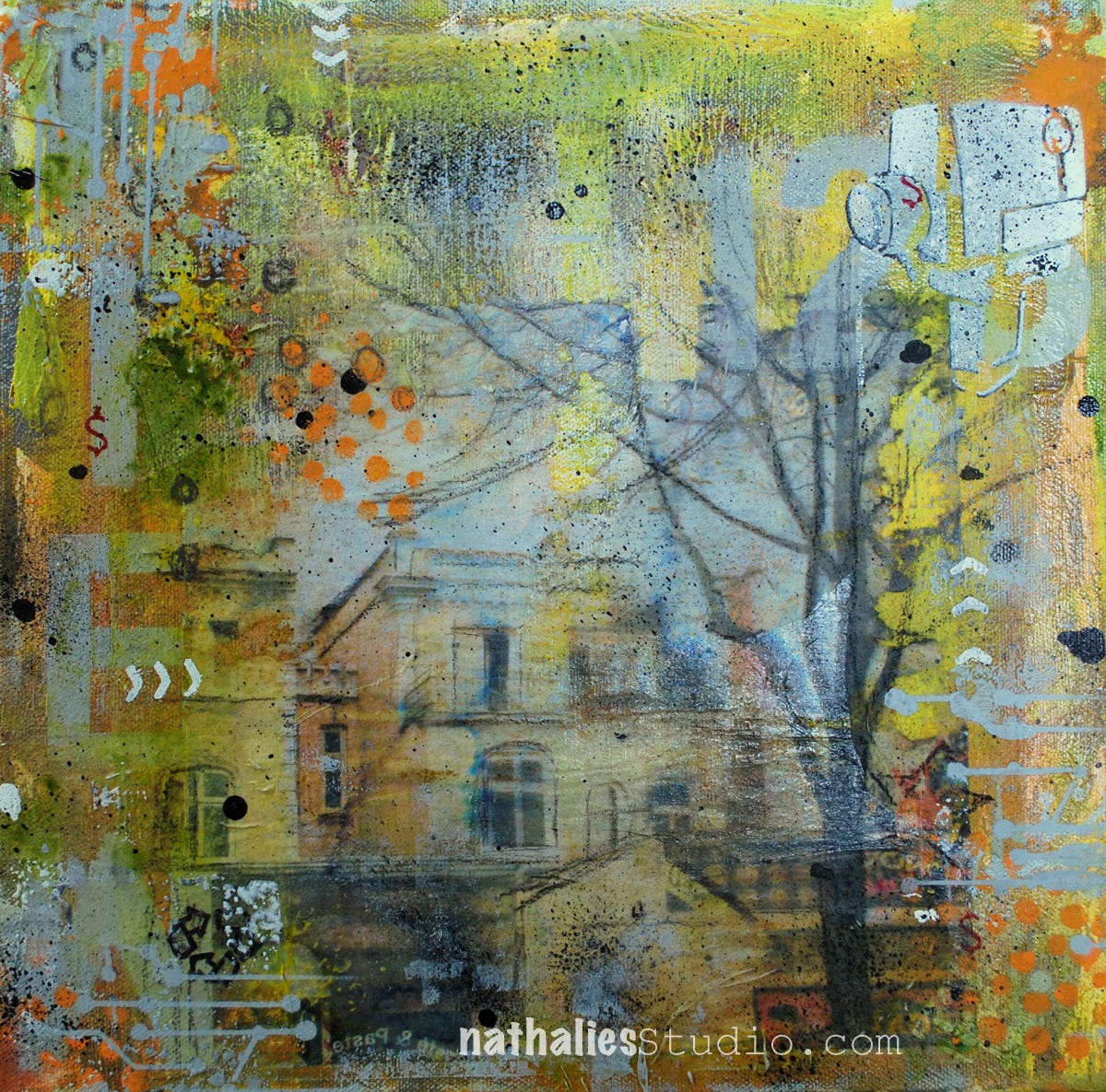
I still carry my experience at The Gängeviertel with me. It shaped how I approach my art, focusing on buildings and the stories they contain. It's why I started researching the buildings I am inspired by, that speak of many changes, and my own house's history. It's why I find myself drawn to documenting overlooked corners and fading facades before they disappear.
Both 111 1st Street and The Gängeviertel remind us that the most valuable preservation happens before the bulldozers arrive – in the connections we build, the stories we tell, and the communities we nurture. Artists may sometimes be the first to recognize a building's potential, but saving it requires all of us to understand its worth.
The next time you pass an old building with character, pause for a moment. Look up at its windows and wonder about the lives that have passed through them. Whether you're a longtime resident, a city official, or someone who just moved here last month, these stories are now part of your inheritance. I hope they inspire you to not just look up and notice the architectural details above the storefronts, but to engage actively in preserving the soul of our city – by supporting local artists and small galleries, attending community meetings, and most importantly, building those horizontal connections that transform a collection of buildings into a living, breathing community.
This post accompanies my conversation with Tris McCall on Nat's Sidewalk Stories podcast. Listen to our full conversation here
David Goodwin wrote a wonderful book about the importance of this place: Jersey City and the Artists of 111 1st Street










I love this insight w/ the comparison. Tough reading about a completely different outcome. That could have been us.
Thank you for bringing to my attention the fragile yet vital relationship between artists and urban spaces. It’s heartbreaking how easily creative hubs like 111 1st St. vanish just like that.
And btw I have a personal question about this topic that I left in your inbox, when you have time please check it out.